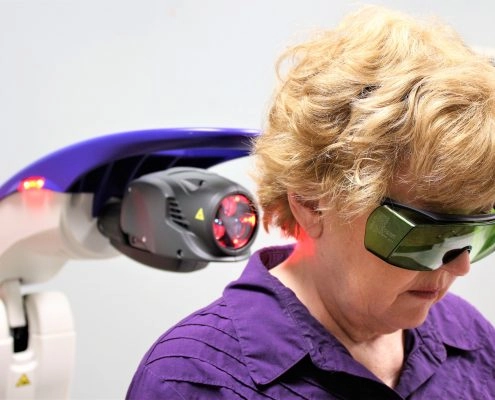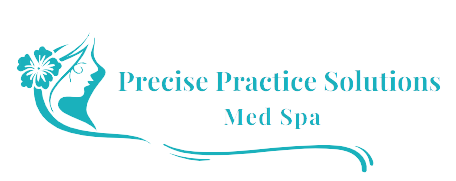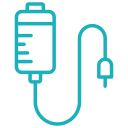- 26518 Oak Ridge Drive, Spring, Texas 77380
- precisepractices@gmail.com
- (281) 816-6067
Our Services
Injectables
Injectables” is a broad term that refers to medications or substances that are administered into the body through injection. This can include various types of injections, such as:
Intramuscular (IM) Injections: These are injections into the muscle tissue. They are often used for medications that need to be absorbed relatively slowly into the bloodstream. Common examples include vaccines and some antibiotics.
Subcutaneous (SC) Injections: These injections are given just beneath the skin into the fatty tissue. Insulin and some vaccines are administered this way.
Intravenous (IV) Injections: In these injections, medications or fluids are delivered directly into a vein. This method allows for rapid absorption into the bloodstream and is commonly used in hospitals and clinical settings.
Intradermal (ID) Injections: These injections are given into the skin layer, typically at a shallow depth. Tuberculosis skin tests are an example of intradermal injections.
Intrathecal Injections: These injections are administered into the spinal canal. They are used for certain medical procedures, such as spinal anesthesia and some diagnostic tests.

What to Expect During MLS Treatment
During treatment, your dentist will use a hand-held device that emits light. The device is placed and moved over your skin in the targeted pain area, producing a warming sensation as it begins to treat any affected tissue. MLS therapy is completely painless, and there is zero recovery time involved afterward since there are no side effects.
MLS therapy treatments only take about 10 minutes to complete. Treatment is unique for each patient depending on their distress level and what degree of pain they are experiencing in the TMJ and surrounding areas. Most patients feel significant relief after 2 to 3 treatment sessions when inflammation starts to decrease; however, other patients need 6 to 12 sessions in total to feel completely recovered.

Laser
MLS cold laser therapy is a non-invasive treatment that can help manage pain. While MLS laser therapy can be used to treat pain in multiple areas of the body, including the back, feet, and hands, Procerus only uses it to treat craniofacial pain.
MLS treatment works by boosting cellular energy in the pain-afflicted area. Multiple light wavelengths are used within the same laser, so the MLS laser system is able to block multiple sources of pain while also increasing blood circulation, allowing your body’s nutrients to be delivered to the painful area more quickly.
With MLS laser therapy, dental pain from a tooth, sore neck, or TMJ joint pain can be relaxed and reset to cure any discomfort you may be experiencing. The laser produces different energy watts that penetrate the inflamed tissue, reduce inflammation, and enhance healing in the pain-afflicted area.
What Are the Benefits of MLS Laser Therapy?
MLS therapy is a great option for patients experiencing TMJ pain. It’s a non-invasive treatment process that is safe, fast, and painless. MLS laser therapy has no side effects and is FDA-approved. It offers many other benefits as well, including:
- Reducing pain by stimulating cells
- Promoting a faster healing process by increasing enzyme production
- Reducing inflammation and pain in the targeted area
- Stimulating fibroblastic and osteoblastic proliferation, increasing bone repair speed
- Relaxing muscles and muscle spasms caused by TMJ disorder or other facial pain
- Decreasing swelling in the targeted area by stimulating lymphatic drainage; lymphatic movement allows for damaged tissue to regenerate healthier cells
- Energizing cell membranes and allowing essential nutrients to be transported, promoting healing, and allowing new cell growth
Additionally, MLS laser therapy for dental discomfort can deliver over 100 times more energy than the previous generation of cold laser treatments. With more healing energy and power, this new technology allows for shorter treatment times and fewer therapy sessions needed to experience immediate pain relief.
Facial Contouring
Facial contouring is a cosmetic procedure aimed at enhancing the shape and definition of the face. It involves using various techniques and treatments to create more balanced and aesthetically pleasing facial features. Here are some common approaches to facial contouring:
Non-Surgical Facial Contouring:
a. Dermal Fillers: Injectable dermal fillers, such as hyaluronic acid (e.g., Juvederm, Restylane) or calcium hydroxylapatite (e.g., Radiesse), can be used to add volume and definition to specific areas of the face. They are often used to plump up the cheeks, enhance the lips, and reduce the appearance of wrinkles.
b. Botox and Dysport: Botulinum toxin injections (e.g., Botox, Dysport) can be used to relax muscles in the face, which can reduce the appearance of fine lines and wrinkles and create a more youthful appearance.
c. Thread Lift: This minimally invasive procedure involves using dissolvable threads to lift and reposition sagging facial tissue. It provides a subtle but noticeable improvement in facial contours and can address mild to moderate sagging.
d. Laser and Radiofrequency Treatments: Various laser and radiofrequency devices can be used to tighten the skin, improve skin texture, and stimulate collagen production. These treatments can enhance facial contours by reducing sagging and wrinkles.
Weight Loss
Weight loss refers to the process of reducing one’s body weight, typically with the goal of achieving a healthier body composition and improving overall health. Here are some key principles and tips for healthy weight loss:
Balanced Diet: A balanced and nutritious diet is essential for sustainable weight loss. Focus on consuming a variety of foods from all food groups, including fruits, vegetables, lean proteins, whole grains, and healthy fats. Avoid or limit foods that are high in sugar, saturated fats, and refined carbohydrates.
Portion Control: Pay attention to portion sizes to avoid overeating. Use smaller plates, bowls, and utensils to help control portion sizes, and be mindful of portion sizes when eating out.
Calorie Deficit: Weight loss generally occurs when you consume fewer calories than you burn (calorie deficit). You can achieve this by reducing calorie intake through diet and increasing calorie expenditure through physical activity.
Regular Exercise: Incorporate regular physical activity into your routine. A combination of cardiovascular exercises (e.g., jogging, cycling) and strength training (e.g., weightlifting) can help burn calories, build muscle, and boost metabolism.
Hydration: Drink plenty of water throughout the day. Sometimes, thirst is mistaken for hunger, leading to unnecessary calorie consumption.
IV Infusion Therapy
IV (intravenous) infusion therapy is a medical treatment that involves delivering fluids, medications, vitamins, minerals, and other nutrients directly into a patient’s bloodstream through a vein. Here are some key aspects of IV infusion therapy:
Types of Infusions:
a. Fluid Replacement: IV fluids are commonly used to treat dehydration caused by illness, surgery, or other medical conditions. They help restore and maintain a patient’s fluid and electrolyte balance.
b. Medication Delivery: Some medications are administered via IV to achieve faster and more precise effects. This is often done in a hospital setting, especially in emergency situations or when oral medications are not feasible.
c. Nutrient and Vitamin Infusions: IV infusions of vitamins and minerals, often referred to as “IV drips” or “vitamin IV therapy,” have gained popularity for various purposes, including immune support, hydration, and energy enhancement. Common components include vitamin C, B vitamins, and electrolytes.
d. Blood Transfusions: IVs are used to deliver blood and blood products, such as red blood cells, plasma, or platelets, to patients who have lost significant blood due to trauma, surgery, or medical conditions.
EMSculpt
EMsculpt is a non-invasive medical device and treatment used for body contouring and muscle building. It is designed to help individuals tone and strengthen their muscles, particularly in areas like the abdomen and buttocks. Here’s an overview of how EMsculpt works and its key features:
How EMsculpt Works:
EMsculpt uses high-intensity focused electromagnetic (HIFEM) technology to induce powerful muscle contractions. These contractions are much stronger and more rapid than what is achievable through voluntary muscle contractions during exercise. The device emits electromagnetic energy that penetrates the skin and fat layers to reach the underlying muscle tissue.
During an EMsculpt session, the device is applied to the targeted area, and it stimulates thousands of muscle contractions in a short period of time. These contractions cause the muscles to adapt and become stronger and more toned over time. It’s often described as the equivalent of doing thousands of sit-ups or squats in just one treatment session.






